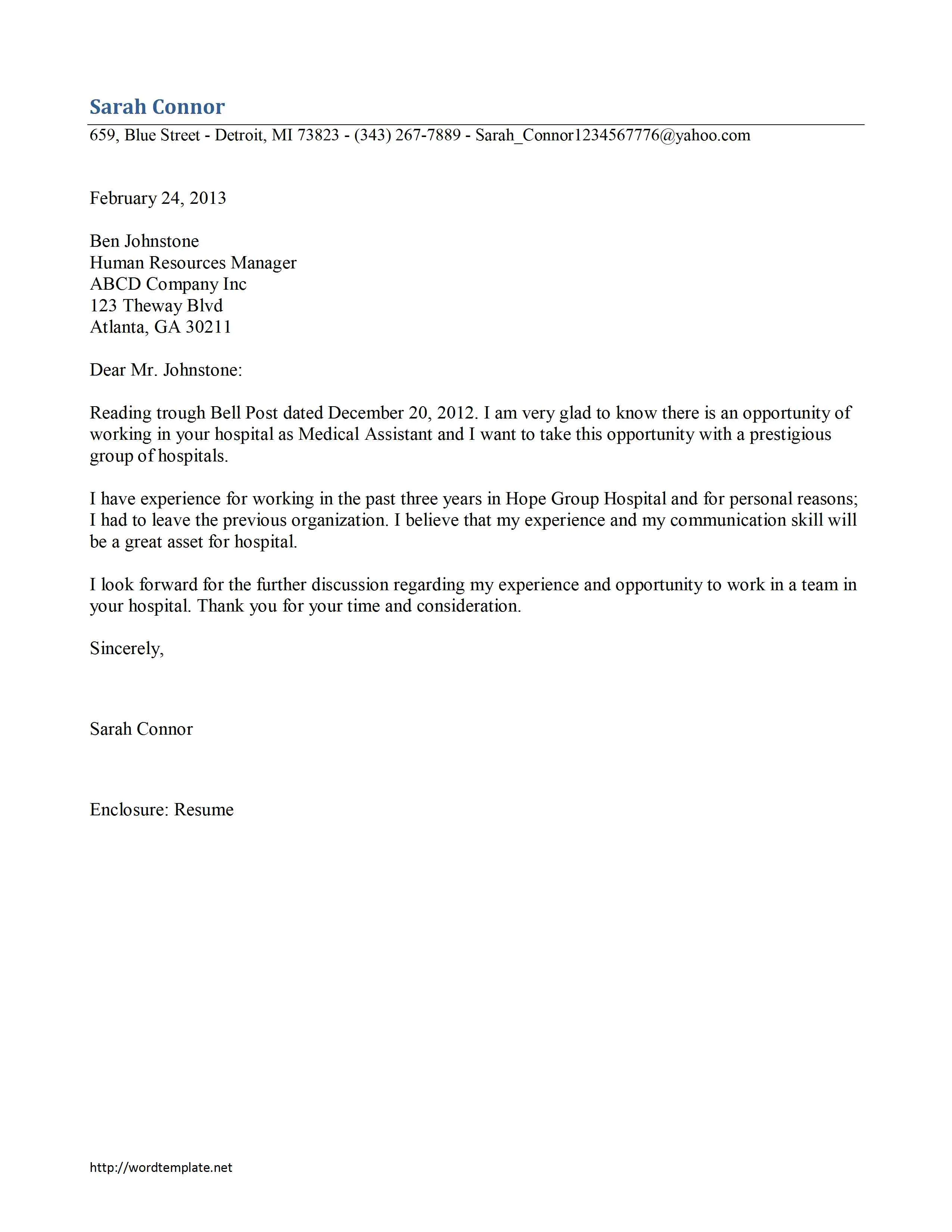Medical Cover Letter Writing Guide
A medical cover letter is a crucial document when applying for any healthcare-related position. It serves as your introduction to a potential employer, offering an opportunity to highlight your qualifications, skills, and experience. Unlike a resume, which provides a factual overview, a cover letter allows you to express your personality, demonstrate your passion for the field, and explain why you’re the perfect fit for the role. This guide provides a comprehensive overview of how to write a compelling medical cover letter that grabs the attention of hiring managers and increases your chances of securing an interview.
Understanding the Purpose of a Medical Cover Letter
The primary purpose of a medical cover letter is to persuade the hiring manager that you are the right candidate for the job. It’s your chance to tell a story beyond the facts presented in your resume. This story should highlight your key strengths, relevant experiences, and specific achievements that align with the job requirements. The cover letter also demonstrates your communication skills, attention to detail, and genuine interest in the position and the organization.
Key Components of a Medical Cover Letter

A well-structured medical cover letter typically consists of several key components, each playing a vital role in conveying your message effectively. These components work together to create a cohesive and persuasive document.
Header Section
The header of your medical cover letter should include your contact information, such as your name, phone number, email address, and possibly your LinkedIn profile. It’s essential to make this information clear and easy to find. Also, include the date and the recipient’s contact information including the hiring manager’s name and the company’s address, if known. Proper formatting of the header is important to create a professional impression. (Image filename medical-cover-letter-header.webp)
Personal Information and Contact Details
Ensure your personal information is accurate and up-to-date. Use a professional email address and a phone number where you can be easily reached. Double-check for any typos in your contact details, as this is the primary way the employer will contact you for an interview.
Salutation
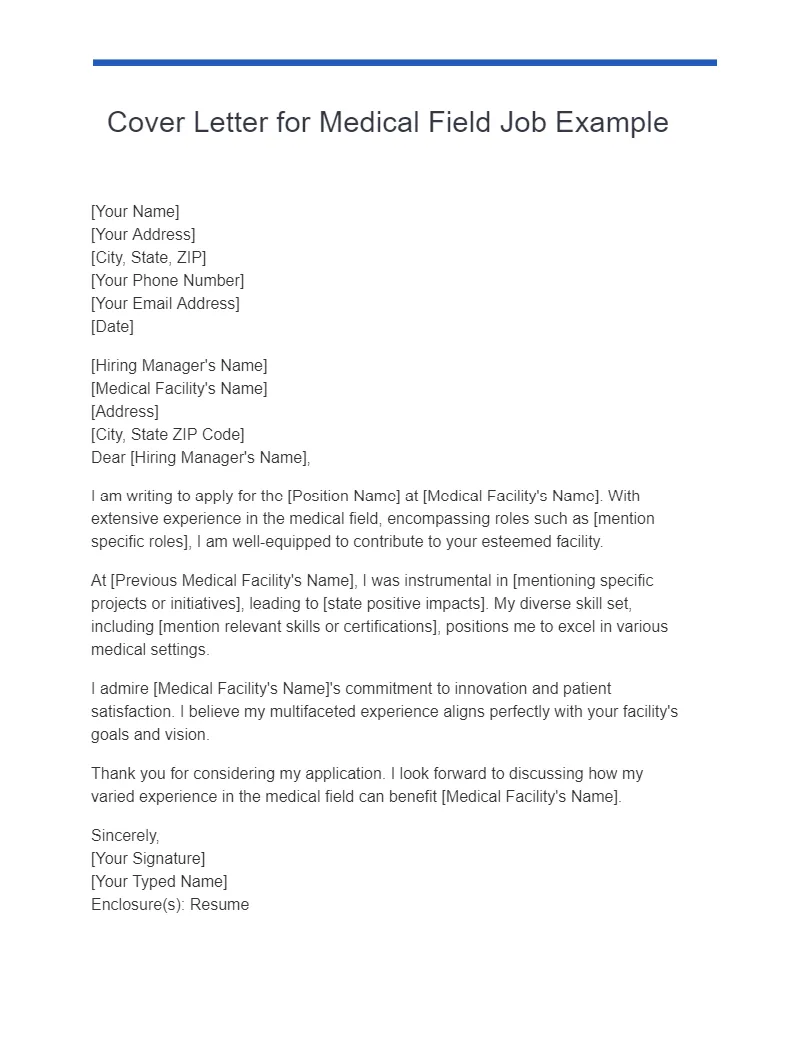
Address the hiring manager by name whenever possible. Research the company to find out the name of the person in charge of hiring. If you’re unable to find a name, use a professional salutation such as ‘Dear Hiring Manager’ or ‘Dear [Department Name] Team.’ Avoid generic greetings like ‘To Whom It May Concern,’ which can make your letter feel impersonal.
Body Paragraphs
The body of your medical cover letter is where you make your case for why you are the ideal candidate. This section typically comprises three to four paragraphs, each serving a specific purpose.
First Paragraph Introduction
Start with a strong opening that immediately captures the reader’s attention. State the position you are applying for and how you learned about the opportunity. Briefly mention your most relevant qualifications or skills to pique their interest.
Second Paragraph Showcasing Skills and Experience
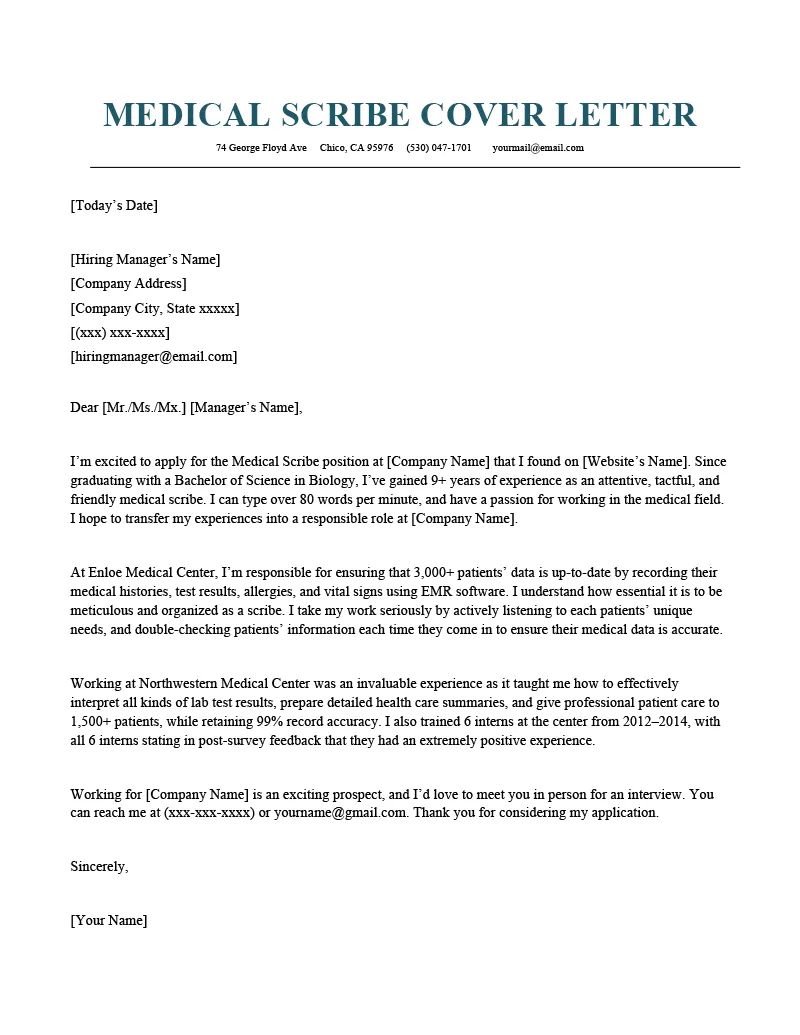
In this paragraph, provide details about your relevant skills, experience, and qualifications. Refer to the job description and highlight the skills and experiences that directly match the requirements. Provide specific examples of how you have utilized these skills in the past and the positive results you achieved.
Third Paragraph Highlighting Achievements
Use this paragraph to showcase your achievements. Quantify your accomplishments whenever possible using numbers, percentages, or specific results. For example, mention how you improved patient outcomes, reduced costs, or increased efficiency in a previous role. Providing these measurable results will make your application more compelling.
Fourth Paragraph Expressing Enthusiasm and Fit
In this paragraph, reiterate your enthusiasm for the position and explain why you are a good fit for the company culture. Research the company’s mission, values, and recent achievements and demonstrate how your goals align with theirs. Express your eagerness to contribute to their team and the healthcare field. (Image filename medical-cover-letter-body.webp)
Closing
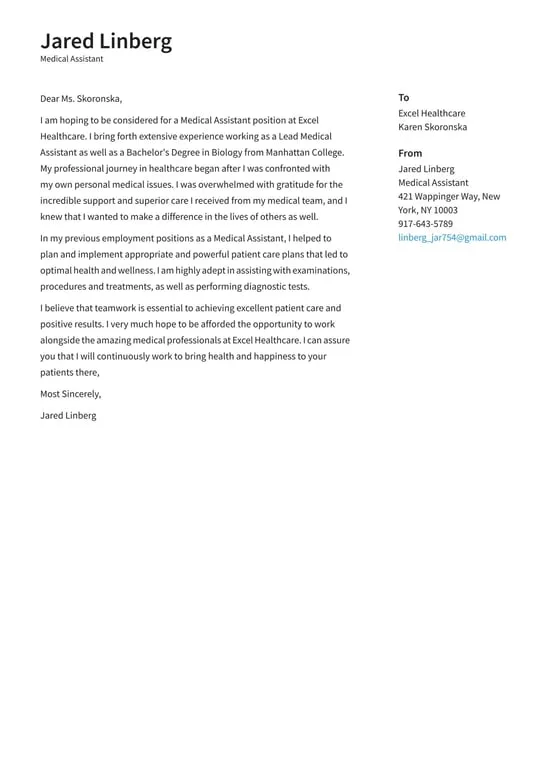
Formal Closing and Signature
End your cover letter with a formal closing, such as ‘Sincerely,’ ‘Respectfully,’ or ‘Best regards.’ Include your typed name below the closing. If you’re submitting a physical cover letter, leave space for your signature above your typed name.
Formatting Your Medical Cover Letter
Proper formatting is essential for ensuring your medical cover letter is easy to read and professional in appearance. Consider these formatting elements.
Font and Font Size
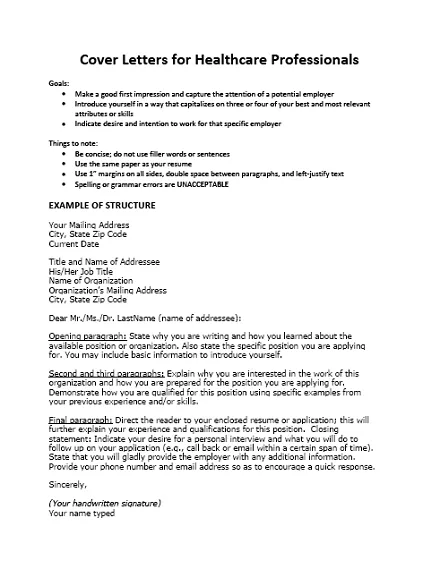
Choose a professional and easy-to-read font such as Times New Roman, Arial, or Calibri. Use a font size of 11 or 12 points. Ensure the font size is consistent throughout the document.
Margins and Spacing
Use standard one-inch margins on all sides of the document. Double-space between paragraphs and single-space within paragraphs to improve readability.
Proofreading and Editing
Thoroughly proofread and edit your cover letter before submitting it. Check for any grammatical errors, typos, and inconsistencies in formatting. Ask a friend, family member, or career counselor to review your letter for feedback.
Examples of Medical Cover Letters
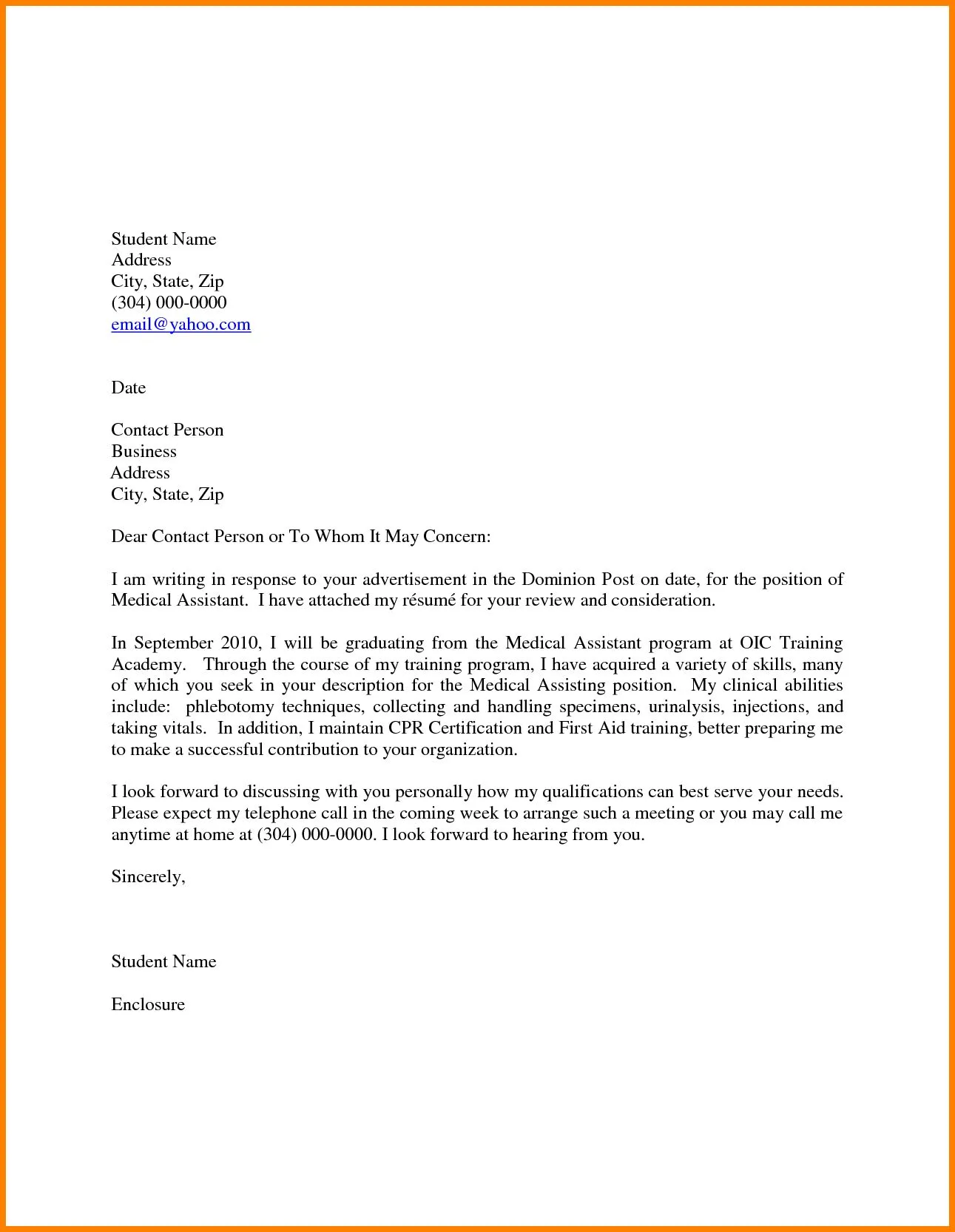
Reviewing sample cover letters can provide valuable guidance. Tailor them to your specific circumstances and the job you are applying for. Here are a few examples to get you started.
Medical Assistant Cover Letter Example
A medical assistant cover letter should emphasize clinical and administrative skills, patient interaction, and experience with electronic health records (EHR) software. (Image filename medical-assistant-cover-letter.webp)
Nurse Practitioner Cover Letter Example
A nurse practitioner cover letter should highlight clinical experience, advanced certifications, and the ability to provide patient-centered care. Focus on specialized skills such as patient assessment, diagnosis, treatment, and prescribing medications.
Physician Cover Letter Example
A physician cover letter should showcase medical expertise, research experience, and leadership abilities. Emphasize specializations, patient care experience, publications, and professional achievements.
Tips for Tailoring Your Cover Letter
A generic cover letter is unlikely to impress a hiring manager. To increase your chances of success, tailor your cover letter to each job you apply for. Here are some tips for personalizing your letter. (Image filename tailoring-cover-letter.webp)
Research the Employer
Before writing your cover letter, research the employer. Visit their website, read their mission statement, and learn about their values, culture, and recent accomplishments. Use this information to demonstrate how your skills and experience align with their specific needs.
Use Keywords from the Job Description
Carefully review the job description and identify the key skills, qualifications, and keywords that the employer is seeking. Incorporate these keywords throughout your cover letter to showcase your relevance and increase your chances of getting noticed.
Highlight Relevant Skills
Focus on the skills and experiences that are most relevant to the job requirements. Provide specific examples of how you have demonstrated these skills in the past and the positive outcomes you achieved. Quantify your accomplishments whenever possible.
Common Mistakes to Avoid
Avoiding common mistakes is crucial for creating a compelling cover letter. Here are some things to avoid.
Typos and Grammatical Errors
Typos and grammatical errors can create a negative impression and make you appear unprofessional. Always proofread your cover letter carefully before submitting it. (Image filename cover-letter-mistakes.webp)
Generic Content
Avoid using generic content or a template that could be used for any job. Tailor your cover letter to the specific job and highlight the skills and experiences that are most relevant.
Lack of Personalization
Address the hiring manager by name whenever possible and demonstrate that you have researched the company. Avoid using generic salutations like “To Whom It May Concern.” Personalization shows that you care about the opportunity.
The Importance of a Strong Cover Letter
A well-written medical cover letter is a powerful tool that can significantly increase your chances of landing a job interview. By following the guidelines provided in this guide, you can create a compelling cover letter that highlights your qualifications, showcases your personality, and expresses your passion for the healthcare field. Remember to tailor your cover letter to each job, proofread carefully, and always put your best foot forward.
